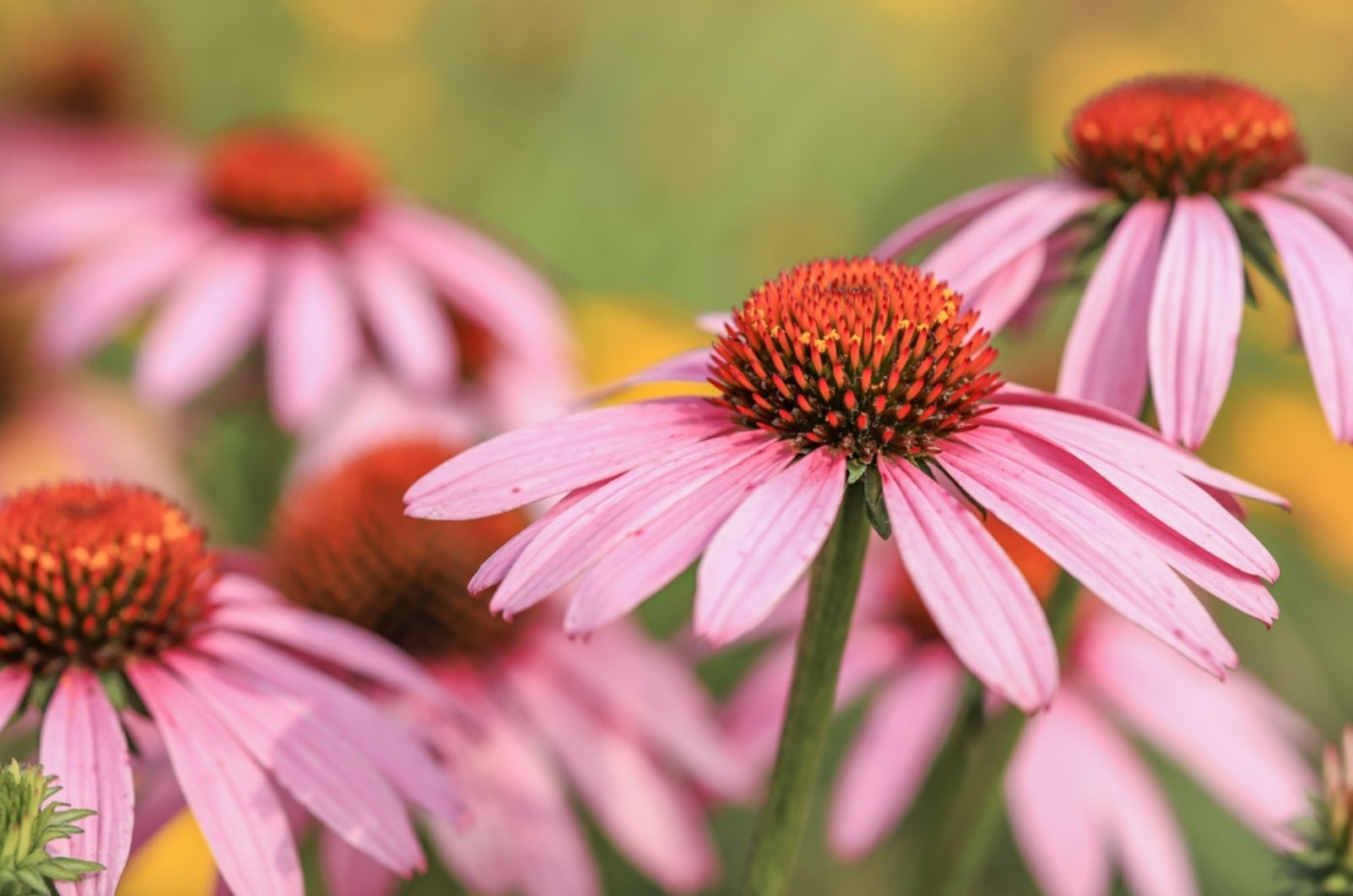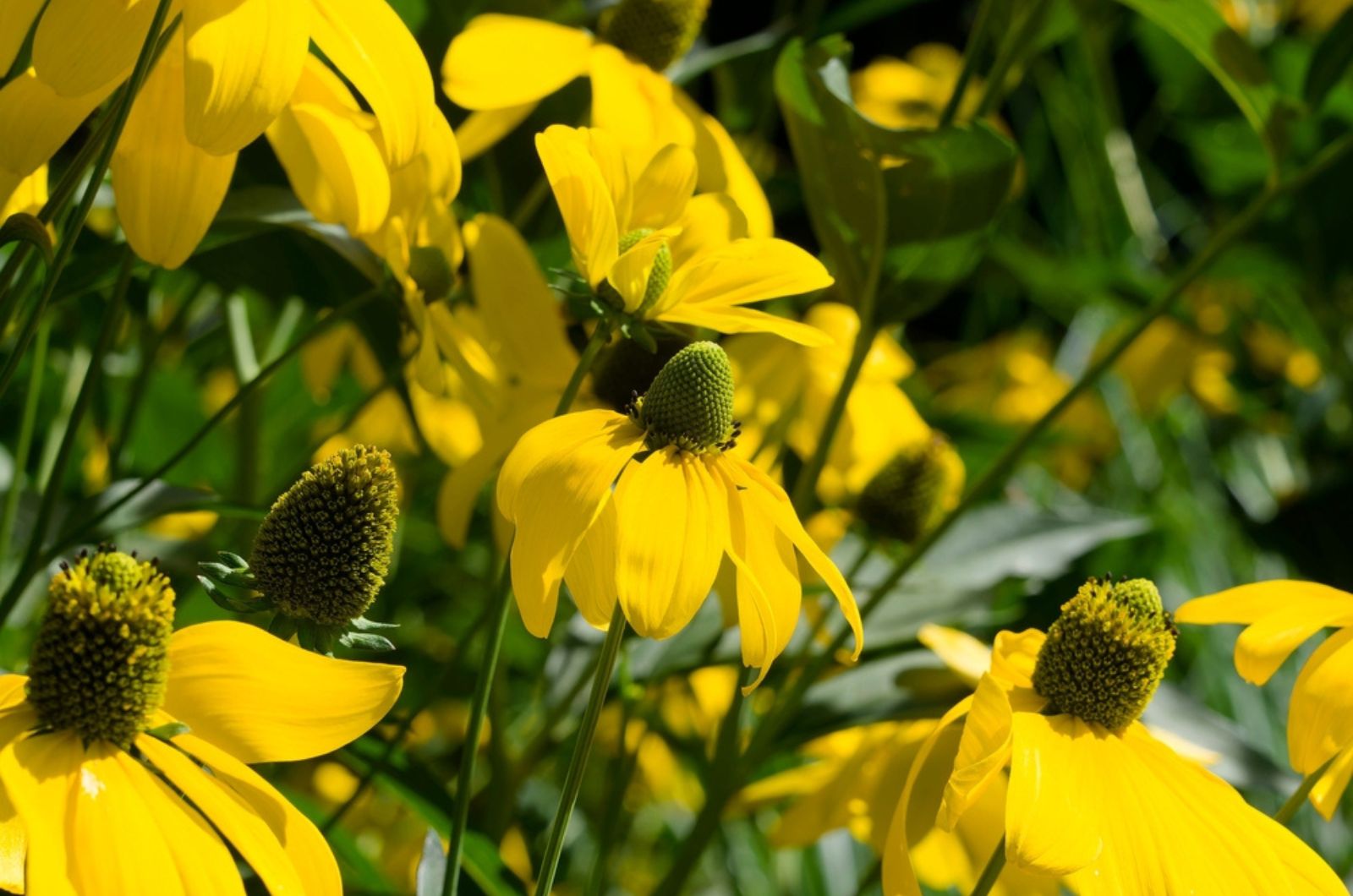Coneflowers come in so many shades and forms that there’s bound to be a variety that’s perfect for your English cottage style or modern garden.
They’re a beloved food source for numerous bees and butterflies, which is all the more reason to add them to your backyard.
Coneflowers don’t require too much of your care as you only need to prune them once a season and deadhead them to keep them neat and tidy. However, you should cut them back to make the most out of them.
Some claim fall trimming is optimal while others say spring cutting back is the best for your plant. Here I discuss both methods so that you can finally choose the one that’s best for you.
Let’s get started!
Cutting Back In Fall
Many gardeners will decide to cut their conflowers back in late fall or early winter just as the plants enter dormancy.
Pruning them to the ground at this time keeps your garden clean and organized. It can even be a part of your regular fall routine that helps you maintain tidy flower beds and the whole yard.
You do have to bear one thing in mind when growing coneflowers: they can self-seed like crazy and overtake your entire small garden. Luckily, you can avoid this by regularly deadheading the spent flower heads before they go to seed.
Or you can let them form seed pods and then harvest the coneflower seeds so that you can strategically plant them where you want and not have them sprouting all over the place.
Choosing whether to cut back these field beauties also depends on your USDA hardiness zone. If you live in a colder climate, it is best to prune coneflowers to the ground in the fall. This method will prevent them from harboring diseases and the dead foliage won’t be susceptible to frost burns.
And yet, if you live in warmer climates, fall pruning of coneflowers all the way to the ground could encourage new growth. The young stems and foliage are rather sensitive and can get easily damaged by cold winter temperatures.
Cutting Back In Spring
Another option is to cut back coneflowers in spring or late winter. This method can bring that classic winter aesthetic to your garden, with plants building natural architecture and seed pods glistening in the frost or snow dust.
But this tactic also has benefits to your overall ecosystem. Dried seed pods become an excellent food source for various types of birds during winter when food is scarce. This nature-friendly tactic supports your local wildlife and they will repay it eventually.
Additionally, leaving the stems above the ground intact can protect the base of your plant and keep it safe from harsh winter frost.
And if you don’t deadhead the blossoms, coneflowers will self-sow and sprout all over your garden. This is perfect for everyone who loves free plants and doesn’t need to have a plan for every single area in their garden.
But if you’re a neat freak like me and love your plants to be in their designated places (most of the time), then consider deadheading the spent flowers. Or you can just get hybrid coneflower varieties that don’t produce seeds and all your worries will fade away.
They will neither spread nor offer food for birds during winter. However, they can still bring aesthetic appeal to your garden, so they’re worth a try.
And finally, if you live in a warm region, you won’t have to worry about new growth being damaged by winter frost. That danger is all gone now, so this method is perfect for warmer climates.
How Far To Cut Coneflowers Back
And now for that everlasting question: how far back should you cut coneflowers?
Prune them all the way down, leaving about 2 inches of growth above the ground. This will keep the crown of the plant safe during winter frost and help the plant produce new growth quickly come spring. And the method is the same for spring and fall pruning.
You can add the pruned stems to your homemade compost as long as it isn’t infected by some kind of disease.
Also, don’t forget to use clean pruners or hedging shears to prevent the spread of bacteria and fungal spores throughout your garden. Sterilize them with rubbing alcohol, and you’re good to go.
Now that you know how easy it is to maintain the good looks of your garden, even if you have coneflowers, why not add a plant or two to your backyard?
They’ll attract numerous bees and butterflies and ensure you have a yield higher than ever.
P.S. They look gorgeous, too!




